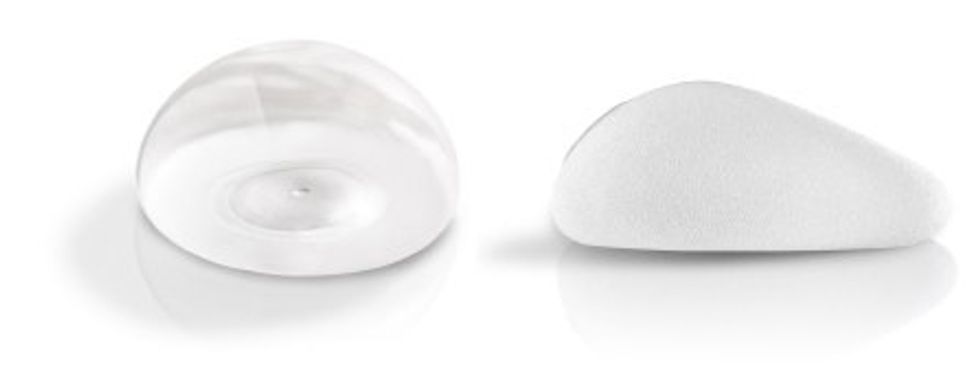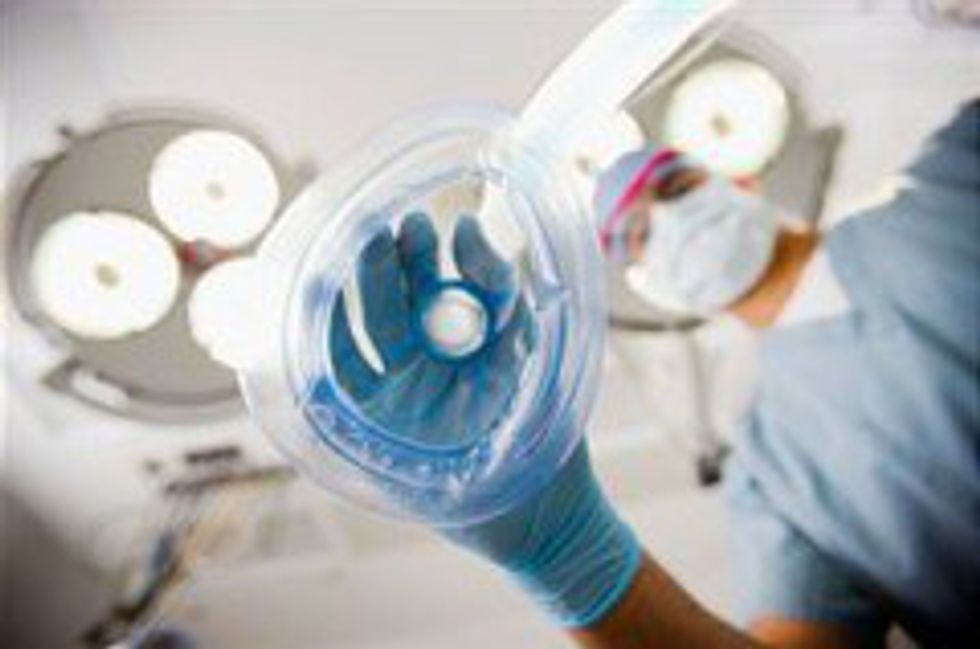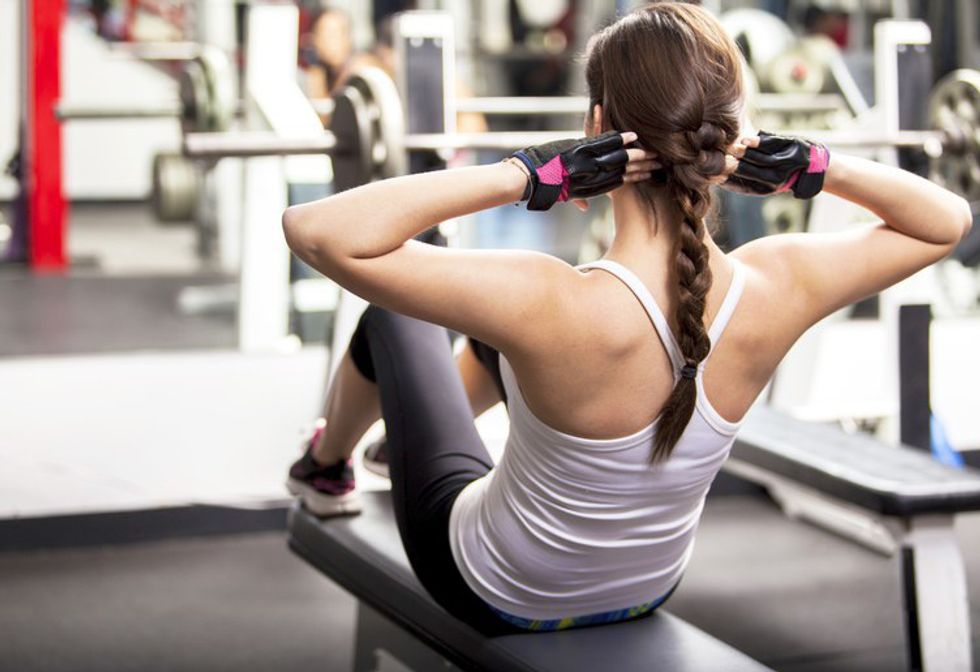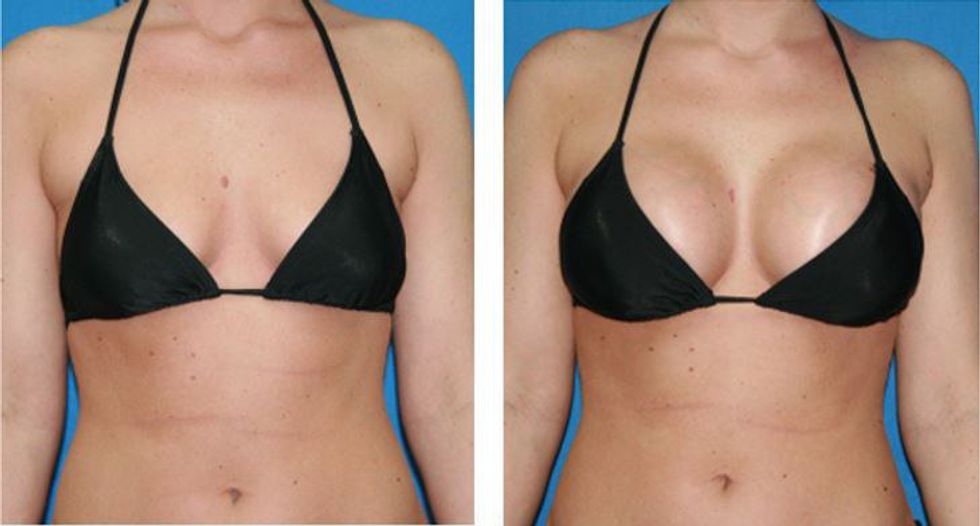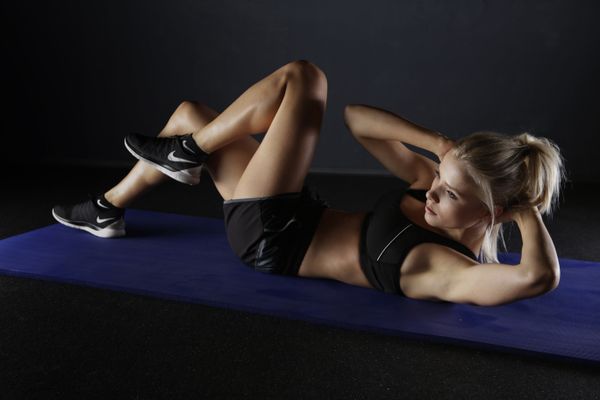Each year, there are over 300,000 women in the United States alone that undergo breast augmentation procedures. Getting a boob job is often considered taboo, but I'm here to break the silence on facts, myths, and all the important details you wish you knew but are too afraid to ask. Since my surgery at age 20, I've had the opportunity to compile the nitty-gritty details and I'm now able to answer some of my most frequently asked questions.
1. "How do I find a plastic surgeon?"
A basic Google search is the most easy and efficient way to find a surgeon. You're going to want to look for a few specific things, including (but not limited to) a board certification, experience, and affordability. Reading reviews online and asking others for references can also be helpful. Some firms even offer free consultations to potential clients--that way you can ask your questions, get to know different doctors, and find someone you trust. Explore your options and do your research!2. "How do you know what size to get?"
Before your procedure, you'll "try on" different sizes. The size of the implant is measured in cubic centimeters, or "cc's." For reference, think about those little plastic cups you used to drink your liquid medicine out of when you were a kid. A single dosing cup holds approximately 30 cc's. According to Dr. Brooke Seckel with Boston Plastic Surgery Specialists, you would need about 150-200 cc's to increase one cup size. In other words, if you are a full B-cup and you want to increase to a D-cup, you're going to need at least 300-400 cc's to achieve the desired look. Keep in mind that it's not the number that's important, but more about how the number looks on your body! A particular size on one woman may look entirely different on you.
3. "Do the implants go over or under your muscle?"
Both, and the decision is entirely up to you. Implants over the muscle, known as subglandular placement, are best for women who already have a good amount of breast tissue prior to the procedure. If you're flat-chested, implants over the muscle can look like giant beach balls on your chest, which is typically not the look that most women aim for. Some opt for this choice because it doesn't affect the chest muscles like an under the muscle placement would. A submuscular implant is placed underneath your chest muscles to help achieve a more natural look. Unfortunately, this can cause recovery to last a little longer and can affect physical activity that requires the use of your pectoralis muscles, like push-ups, or lifting weights. Some surgeons may suggest one option over another depending on your individual circumstances and lifestyle.
4. "Should I get silicone or saline implants?"
Again, this is completely dependent on your preference and what your surgeon thinks is best for you. Silicone and saline implants both have a silicone outer shell, but they differ in terms of the material they're filled with. Silicone implants are pre-filled and the Mayo Clinic describes the fluid as "thick, sticky, and mimics the feeling of human fat," while saline implants are made up of a salt-water solution and are filled once the implant is already in place. Saline implants often feel hard and stiff.
5. "Do I have options for where my incisions will be? I don't want people to see them."
Most surgeons have a particular method they prefer when it comes to your incision spot, but you do have a few options. You can have your implants inserted below the areola (the darkened skin surrounding your nipple), in the natural fold of your armpit, the crease underneath your breast, or through your belly button.
6. "Are there different shapes to choose from?"
Yes. The most common shapes are "round" implants and "tear drop" implants. Round implants are (you guessed it) round and circular in shape and tend to add cleavage, lift, and overall fullness to the breast. Tear drop implants have more of a contour towards the bottom and give a more natural appearance. The downside is that they tend to be more expensive.
7. "What are the risks?"
One of the biggest risks after a breast augmentation is the potential of capsular contracture. Capsular contracture is the term used to describe scar tissue that forms around the breast implants that cause the breasts to harden and become painful or uncomfortable. According to Minneapolis surgeon Richard H. Tholen, the statistics read that approximately 1.5-3% of breast augmentation patients experience this. There are different measures that can be taken (choice of implant, size, etc.) to ensure your chances of this are as low as possible. Another potential implication is known as "rippling". Rippling is when the appearance of ridges or wrinkles on the implant show through your skin. You can learn more about capsular contracture, rippling, and other risks associated with breast augmentation surgeries here.
8. "Am I going to go broke over a procedure like this?"
The price of a breast augmentation will differ depending on where you live. Generally speaking, if the cost of living is higher, the price of your surgery probably will be as well. You have to consider all of the factors that go into the overall price, including the implants themselves, facility fees, hospital fees, anesthesia fees, and any additional costs your surgeon may have. The average price across the United States just to perform the surgery is $3,708 according to the 2014 statistics from the American Society of Plastic Surgeons. When you look at the 2012 edition of the Healthcare Bluebook, total costs (all fees added together) can add up to as low as $5,853 in Ohio and as high as $7,301 in New York City. Some surgeons offer payment plans, while others might require full payment up front.
9. "How long is the surgery itself?"
The surgery takes about 1-3 hours. This varies based on multiple factors of the procedure, like the techniques used and placement of the implants.
10. "How long is recovery?"
Recovery is different for everyone, but it usually takes a few weeks for swelling to come down and for you to feel back to normal. The first couple of days are the worst, and you'll probably be confined to your bed or couch to watch Netflix (what a shame, right?). Your surgeon will have individual restrictions that probably include how much you can carry or lift while you're still recovering.
11. "Are there any side effects during recovery?"
The main side effects I experienced were a feeling of "tightness" in my chest (due to the skin being stretched), swelling and soreness, discomfort, and little bit of "fog" from the medication my surgeon prescribed to me. These side effects improved and disappeared within 2-3 days.
12. "Will any of this hurt?"
During the surgery, you're under anesthesia and completely unconscious. You couldn't feel a thing even if you tried. The only pain or discomfort you'll feel is during the first week or two post-op.
13. "Will I have to wait forever to work out again?"
No, not forever, but definitely not as quickly as you might hope. It's typically advised to wait 4-6 weeks before lifting weights, but you should be cleared to do light intensity cardio or lower body work within the first couple of weeks as long as nothing you do interferes with the healing process. Everyone's recovery timeline is different, so make sure to chat with your surgeon about what he or she thinks.
14. "Can I still sleep on my stomach?"
You totally can, but I would suggest not doing so until you've recovered completely. It can be painful and uncomfortable if you put too much pressure on them too soon.
15. "But what if they pop or something?"
Implant rupture is uncommon. If, for whatever reason, your implant leaks, just know your body is going to be okay! If you have saline implants, the salt-water solution will simply leak into your body and your tissues will absorb it. With silicone implants, there won't be any leakage since the material is gel-like. Dr. Jon F. Harrel, a surgeon out of Miami, believes the risk of this happening in any given women is 6-8 percent over a span of 10 years.
16. "I've heard that some women lose feeling in their nipples afterwards. Is that true?"
What you've heard is most definitely true. Dr. Pablo Pritchard of Phoenix, Arizona says that 10 percent of women lose partial or full sensation in their nipples, but the sensation goes back to normal within 3-6 months.
17. "Can I still breastfeed if I have kids?"
Yes, you can. A breast augmentation should not affect your ability to breastfeed because the implant is placed underneath the mammary glands.
18. "Am I going to need to buy all new bras?"
Potentially--but this ultimately depends on how extreme your "before" and "after" is. You'll most likely be able to wear all your pre-op sports bras, but if you started as a small A-cup and now you're a full C, you're realistically going to have to make some new purchases.
19. "How long should I wait before I go shopping for them?"
I would recommend waiting at least one month before you go shopping for new bras. This is because during the first few weeks of recovery, your new breasts will sit very high on your chest. After awhile they settle into place, and this can make a huge difference in how your bras fit you. You'll want to wait until this happens so you can make sure you're spending money on the right sizes.
20. "What about clothes?"
You may feel more or less confident in different types of tops after your procedure, but overall, this shouldn't be a big issue. But who doesn't want an excuse to hit the mall?
21. "I'll have cleavage now, right?"
Not necessarily. Yes, breast augmentations will increase the volume and size of your breasts, but that doesn't change the size of your rib cage or how close together or far apart your breasts originally were. If your breasts were far apart before surgery, they'll stay far apart after surgery; the same as if your breasts were always close together.
22. "Do I have to be a certain age?"
You have to be at least 18 years old for saline implants and at least 22 years old for silicone implants. It isn't "illegal" for you to get silicone implants earlier, the FDA simply has 22 years of age as the recommendation.
23. "Do they last forever?"
Simply put, the answer is no. Some women need theirs replaced in 10 years, others don't need them replaced for 30 years. Regardless, know that they don't last a lifetime and you will need to pay for a second replacement surgery if you choose to do so.
24. "Do you regret anything?"
Personally, no. Not a single regret. My surgery was one of the best decisions I have ever made for myself!
25. "What do you think are the best and worst things about having a breast augmentation?"
I think the best thing about my breast augmentation is the increased self-esteem, body image, and confidence I feel every day. It's personally helped me feel more "womanly" and attractive. The downside of having bigger breasts are that they sometimes get in the way and certain tops can be unflattering. Overall, if I had the chance to go back and do it again, I would in a heartbeat.







